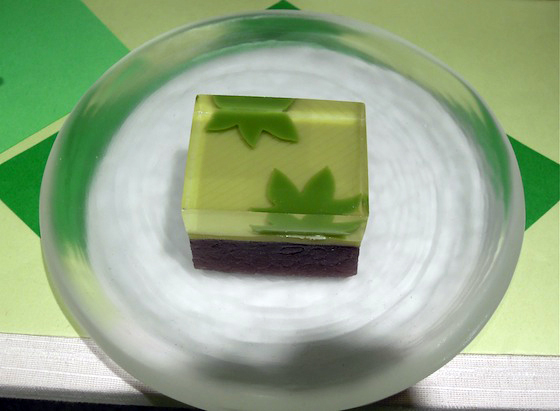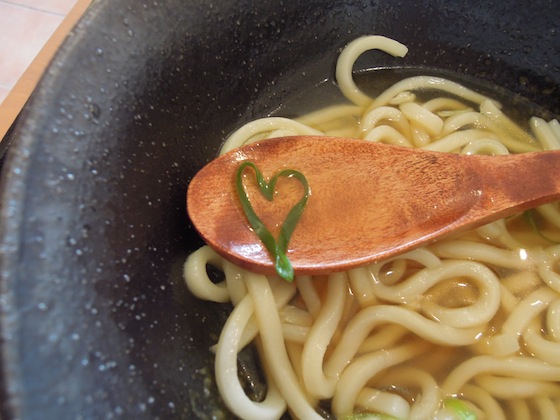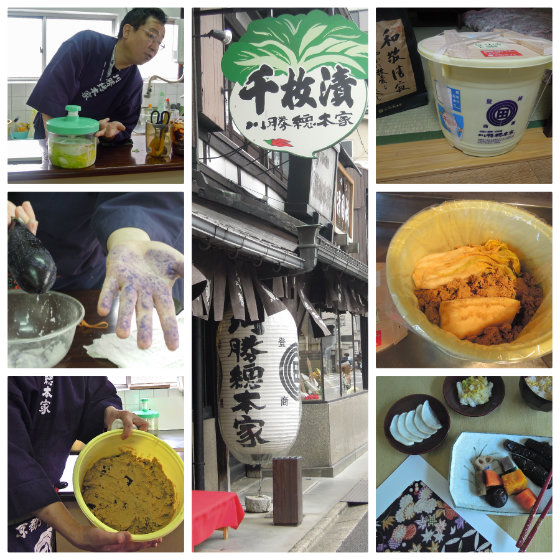
Pickle making class and homework=lunch
After salting the daikon, cabbage, eggplant and cucumber, I bury them in my tub of rice bran mush, as directed by Mr. Akazawa. He tells me that once I take my container home, I should keep it covered, mix up the nukadoko everyday and specifies how long to wait before each veggie will be properly pickled. The problem, I realize, is that the tub weighs over 10 pounds and there is no way I can lug it around on the bus all day. Tomoko and I have another class scheduled for the afternoon in wagashi (sweet) making. No problem, says Mr. Akazawa, Kawakatu will be happy to deliver the tub of pickles to my door tomorrow morning -- and they do. Like so much in Kyoto, from white-gloved drivers in immaculate taxis with lace covered headrests to super helpful subway station agents, exceptional service is part of the cultural landscape.
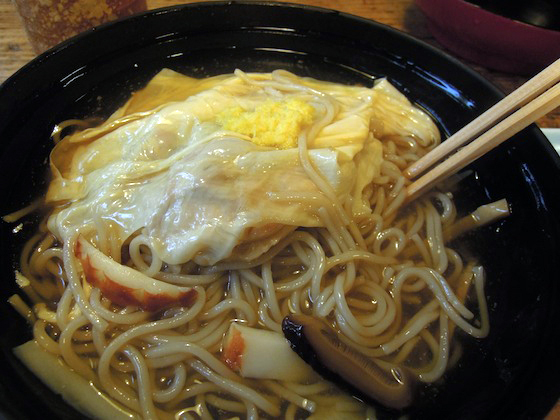
Soba soup topped with yuba
Since Kyoto’s climate makes it an ideal vegetable growing center and home to carrots and radishes only cultivated in this region, its pickles are particularly prized -- an item that Japanese visitors from other parts of the country often bring back as souvenirs. I taste a host other Kyoto specialties in coming days, including yuba, paper-thin, dried, soybean milk skin and a rainbow of exquisitely shaped sweets made with rice flour mochi. It’s springtime, so the sweets, reflecting the Japanese reverence for nature, take the form of flowers, young green leaves and cherry blossoms.
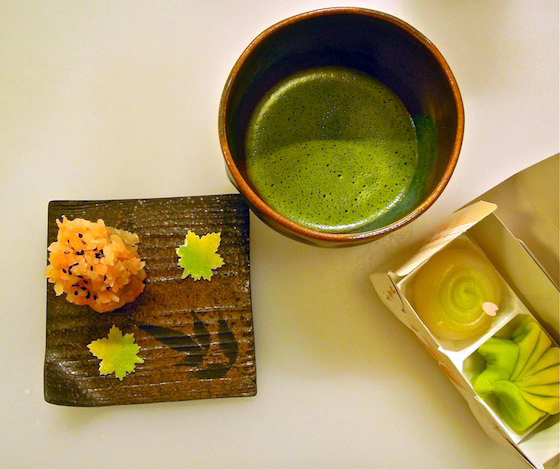
Sweets and tea
In the wagashi making class, we learn how to encase a marble of red bean paste with pearly white mochi to make a smooth globe (it’s harder than it looks). Pressing the ball with a spiral form leaves a circular imprint that we accent with a tiny pink petal. Tomoko tells me this represents a fallen cherry blossom in a pool of water. We sample our sweets the traditional way: with a bowl of matcha green tea.
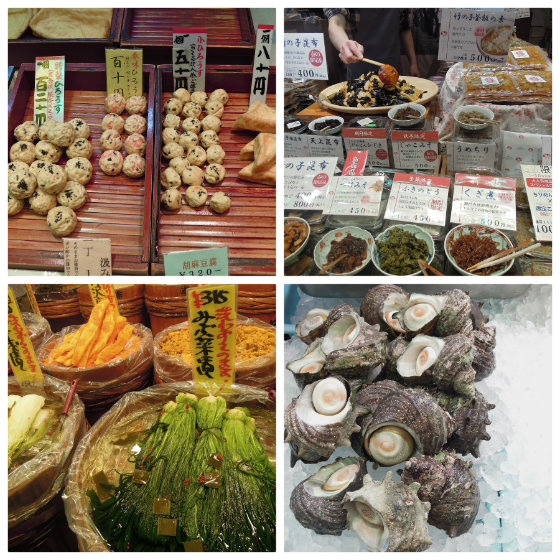
Nishiki Market wares: from tofu to turban shells
The best place to see and savor Kyoto’s locally produced, fabulous foodstuffs is the Nishiki Market, a long covered hall whose sides are lined with fish sellers, pickle peddlers, dried fruit dealers, and tofu vendors, many offering free samples. I tour the market on another day with Kyoto Free Guide, Ririko Yoneda, who has thoughtfully prepared a mini-dictionary so she can answer my inevitable “What’s that?” with the appropriate “conger eel” or “turban-shell.”
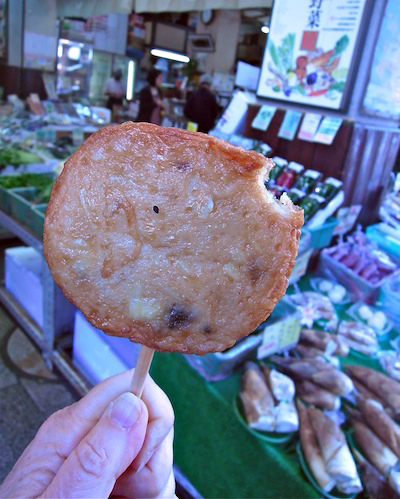
Fish paste pop
We stop for a snack of flavored fish paste on a stick. My sweet potato pop is yummy.
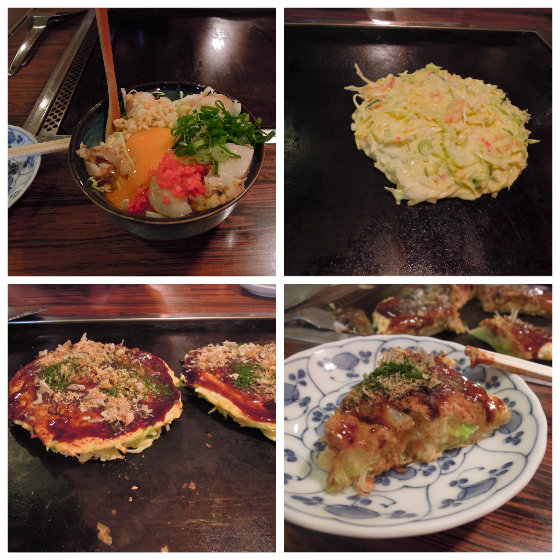
DIY lunch: okonomiyaki
Somehow still feeling hungry, we head to a restaurant where we mix and then cook our lunch of okonomiyaki on a hot grill. It’s a thick pancake made of cabbage, egg, ginger, green onions, flour and your choice of meat.
After lunch, Ririko and I take the old-fashioned Randem tram to a little soba shop run by Mr. Umehara, who provides a lesson in making these popular buckwheat noodles.
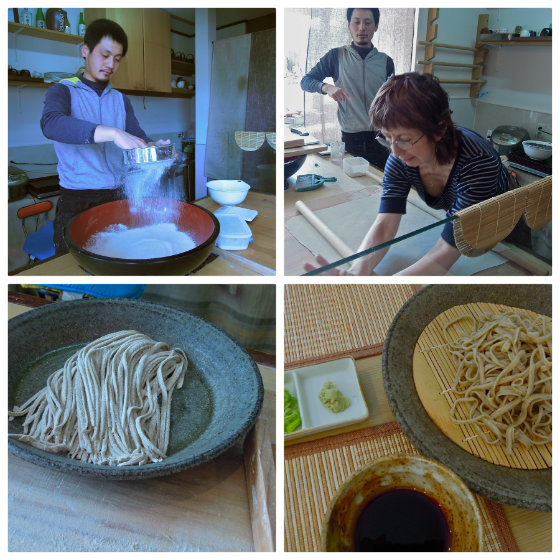
Making buckwheat soba noodles with help from Mr. Umehara
Although Ririko is a fine interpreter, the young soba chef and I find that words are not really necessary, as I attempt to copy his movements mixing, kneading and rolling out the stiff dough. He charmingly resorts to drawing in the flour to explain that my circle needs to become a square and then a long rectangle. Not surprisingly, the rolling requires a lot of muscle. The hardest part is cutting the noodles into uniform skinny strips with a huge, heavy knife, an art that I gather takes months or years to master.
After my labors, Ririko and I enjoy a plate of cold cooked soba noodles that we dip into a tangy sauce enlivened with wasabi and green onions. Then Mr. Umehara brings over a pitcher of milky water. Ririko explains that this is yu, the cooking liquid from the soba noodles. We pour a generous amount into our dipping sauce bowls and the resulting soup is the perfect capper to our afternoon soba snack.
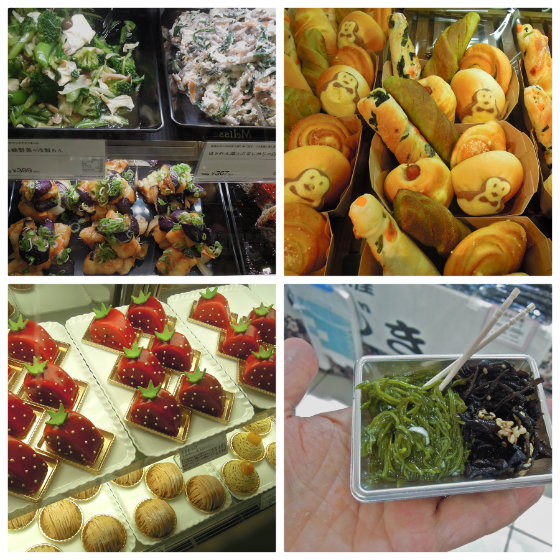
Daimaru Market's delicacies and tiny taste of seaweed salads
Another day, I venture out on my own to the food floor of Daimaru department store, where the selection is overwhelming: dozens of gorgeous salads, pastries, fried vegetables, again with plenty of tastes. The lovely thing about lunching in this living food museum is that a foreign visitor doesn’t need to struggle with a menu—just point.
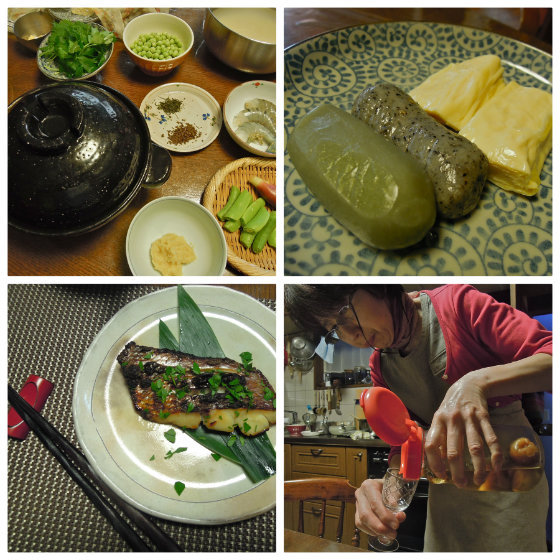
Cooking class: fish, fu, yuba and plum wine with Emi
For my last food adventure, I’ve lined up a cooking class given by Emi Hirayama in her home kitchen. She usually teaches 3-4 students at a time, but the other couple scheduled to attend got sick so I have the delightful Emi all to myself. In 3 hours we make and eat 5 different dishes that highlight spring flavors, such as prawn and sugar snap salad with white miso dressing and grilled sea bream. Emi has prepared ingredients in a dozen little bowls spread across her kitchen table and puts me to work grating a Japanese yam that becomes a sticky jelly, deboning fish and chopping sansho pepper leaves. This accomplished cook also introduces me to 3 kinds of miso, mugwort and black sesame flavored fu (wheat gluten) and explains why the sea bream is considered a lucky fish (its name in Japanese is a pun on the word for “celebrate”).
Although Emi’s English is very good, as she maneuvers around her cozy kitchen pulling out a multitude of dishes to hold the many elements of the meal, she endearingly murmurs to herself in Japanese (as I know I do in English, trying to keep my place in a complicated recipe). She emphasizes presentation, so we make “little mountains” of the peas and prawns. We end the meal with tiny glasses of plum wine that she has—of course—made herself and clink our glasses with a toast: Kanpai! And so I toast Emi, Tomoko, Ririko and Kyoto for the gift of these culinary adventures— Kanpai!
